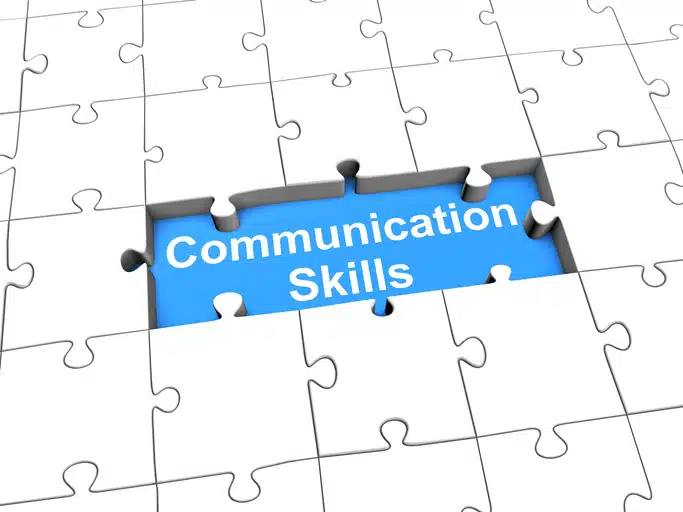As I noted in the first article, I do not profess to be a communication expert. I have failed too many times to be considered an expert. However, surprisingly, numerous peers, team members, immediate bosses, and senior executives have frequently noted communication as one of my top strengths and servant-leadership skills. I have worked with some incredible leaders and role models throughout my career, and I picked up many great tips and communication habits along the way.
In the first article, I discussed the skill of active listening and provided some examples. I also mentioned how that skill conveys respect to the speaker, reduces ambiguity, and positions you as a leader with excellent communication skills. Such skills are crucial to being a great leader. Granted, a great leader also needs to have other skills, a healthy emotional quotient (EQ), flexible soft skills, and sufficient cognitive abilities. But given the pace of our world and the importance of clear communication in the workplace, I would argue one will never achieve their full leadership potential if they don’t perfect their communication skills.
In the second article, I focused on the skill of intentional communication. Highlights included (1) having a solid grasp on the subject matter and critical points to ensure verbal and non-verbal communications are in sync, (2) conveying the pertinent details that I labeled “who, what, where, when, and why,” and (3) tailoring your message to the learning style(s) of your audience. In short, being intentional about your communication is all about having a well-thought-out, inclusive message with content pertinent to the audience and communicating in a manner relevant to the audience’s learning preferences.
I will use this article to pull it all together and connect the dots between the first two articles and communication habits. The examples I will include in this article have been taken from my “Every Communication is an Opportunity” workshop that I conduct for organizations and teams. In that workshop, the key theme is that every communication, be it verbal, visual, written, or through listening, literally is an opportunity. To be more precise, every communication is an opportunity for individuals to develop and reinforce their brand, convey a leadership image or tone, or refine communication habits they are trying to perfect.

Others remember how you made them feel
One of my favorite quotes is from Dr. Maya Angelou, an author, poet, performer, and Civil Rights activist. Her quote was, “I’ve learned that people will forget what you said, people will forget what you did, but people will never forget how you made them feel.” I learned this first-hand early in my career as the recipient of some very pointed feedback from a 360-degree feedback assessment. The assessment was anonymous, so my team of 10 employees did not hold anything back. I will save the details for my workshops, but I learned from that feedback how much my communications (verbal and non-verbal) with my employees, be it 1:1 conversations or team meetings, impacted them. What was most surprising was realizing how many “little things” were identified in the feedback. I will provide more context later.
My team’s feedback hit me in the head like a 2×4. Some employees felt like I didn’t value their input or, even worse, I did not make them feel part of the team. I couldn’t begin to imagine what I had done or said to make some of them feel this way. Fortunately, I didn’t have to guess what actions caused the feelings. Their feedback also included specific examples, so I had clear insight and understanding into what I had done to create these feelings among my team. The feedback was given to me by my direct manager, with my team in attendance. We sat in a circle while every verbatim statement collected from the survey was read back to me unfiltered. It was a humbling experience, and it also was one of the most profound moments in my career.
As I listened to the feedback, I quickly realized the feelings did not stem from a big argument or “blow up.” It was the “little things.” What are the little things? As leaders, it is easy to go through our daily lives with minimal consideration for how much impact our “little” actions, behaviors, communications, etc., can have on our team members. More often than not, we aren’t even aware we are communicating in a particular manner or that our workplace behavioral styles negatively impact our team members and others around us. We all are different, and we all have our own unique life experiences that shaped each of us. Therefore, a given communication or behavioral style can have varying impacts on different people.
I am so blessed that my employer emphasized leadership development and allowed me to learn and grow from that 360-degree feedback. I’m still far from being a “perfect leader.” However, I can tell you unequivocally that throughout the rest of my career, I made it a top-of-mind personal goal not to revert to doing those “little things” that had such a large impact on how I made my team members feel. I also realized there are no “little things” when it comes to communicating as a leader. All communications are “big things” to somebody.
Every Communication is an Opportunity (ECIAO)
The 360-degree feedback I received made me realize that every communication is an opportunity. I later coined this phrase into the title of one of my workshops. Again, every communication is an opportunity to reinforce a personal brand, leadership image, or skill, among other things. The setting could be a 1:1 meeting with an employee, a status update with the boss, a sales presentation, or any other “big moment.” That communication moment is an opportunity for you to leave a lasting impression, be it positive or negative. Again, the recipient may not remember your exact words, but they will remember exactly how you made them feel. When it comes to leading an individual, that individual’s performance and level of engagement will be significantly impacted by how the leader made them feel. We all know that employees “quit their boss.” If we were to dig one level deeper, I suspect, we would learn that employees quit because they no longer want to work in an environment (or for a boss) that makes them feel a certain way.
Every communication also is an opportunity for us to correct our previous missteps, particularly those where we completely missed the mark or angered or hurt one of our team members or colleagues. In my case, my first opportunity was to immediately make things right with my team and start working on my go-forward communication habits. I started working on becoming a better listener and practicing active listening. Improving my listening habits helped reassure my team members that I listened to their input and considered it. I also started working on being more intentional in my communications, particularly focusing on ensuring my communication style was inclusive of others’ informational needs and learning styles. I also worked on getting my verbal and non-verbal communications in sync.
As I progressed further in my career, ECIAO took on more significance for me. I noticed the positive impact on my team members when I lived out the values and skills I have noted in this series of articles. Conversely, I saw the negative effect on team members when I missed the mark or “got lazy” with my communication. I also was fortunate to have leaders that I could seek out for feedback following some key communications. I knew the preparatory actions I had taken and the objectives I was trying to achieve with a given communication, but getting others’ objective feedback after the communication helped me ascertain if I had sufficiently delivered against the opportunity. Obtaining this feedback was especially important during the parts of my career where I was communicating more “bad” news than “good news.”
Summary
In closing, every communication is an opportunity to develop and reinforce a personal brand, convey a leadership image, or refine communication habits. As I learned early in my career, communication habits and behaviors often impact the recipients more than the actual words. Active listening and intentional communication are two behaviors that will help ensure your messaging has the intended effect on your audience, be it team members, colleagues, or prospects. Living out these two communication behaviors can provide the missing pieces of the puzzle and transform a good leader into a great leader.
I have a passion for helping others develop their communication and leadership skills. My firm helps organizations grow their leaders, increase employee engagement, and improve teamwork for optimal results. Please feel free to reach out to me via LinkedIn or contact me via my website at https://end2endwins.com if you want to learn more about my services and workshops.

